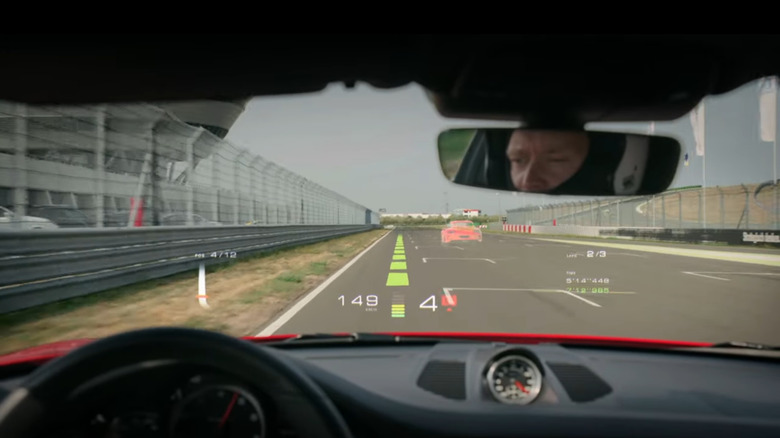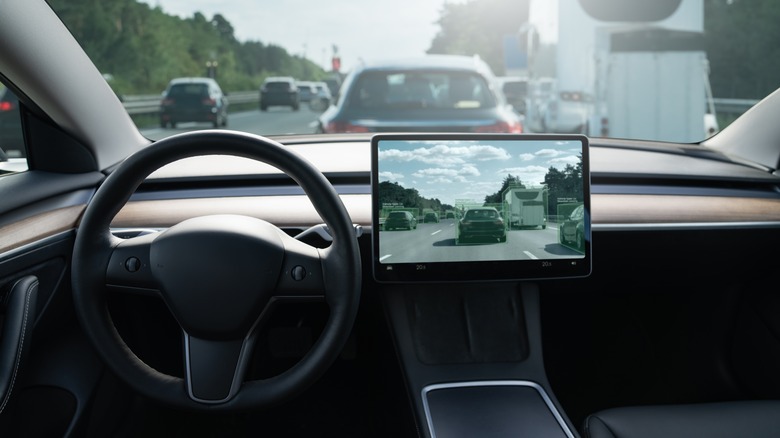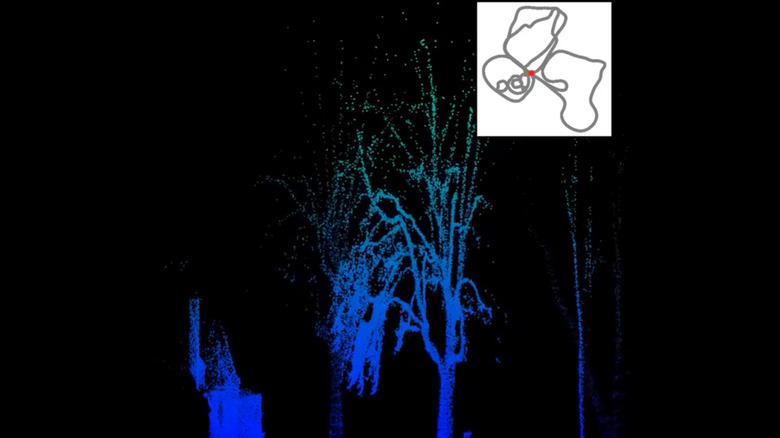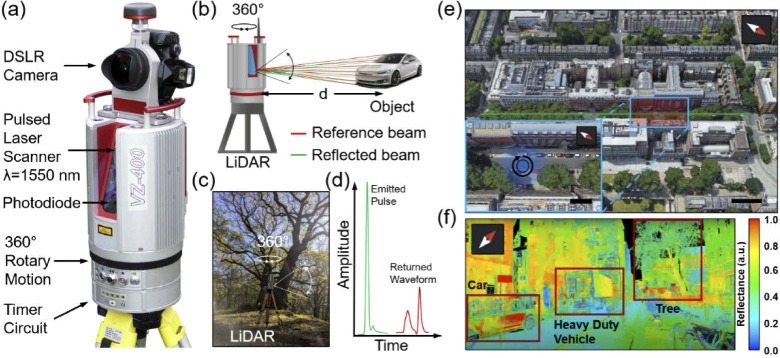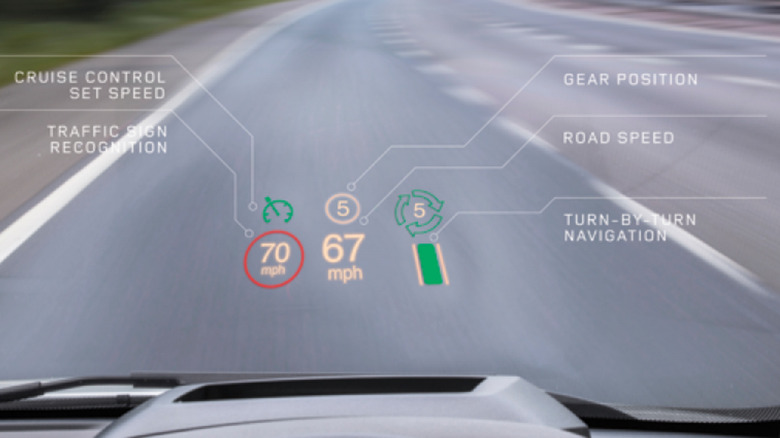Could This New Holographic Screen Tech Save Drivers From Road Hazards?
In 2021, a team at Cambridge University came up with the idea of a 3D holographic heads-up display for cars, promising it would improve driver safety on road. The key selling point was that a three-dimensional representation of the environment around drivers — and especially what's ahead of them — would let them "see through" obstacles that lay ahead. A collaborative effort with experts from the University of Oxford and University College London, the idea was to use a LiDAR (the same sensor you find on some iPhones and iPads) that would create detailed, high-definition 3D representations of objects on the road.
The team has now followed up on that idea with some crucial improvements published in the Advanced Optical Materials journal. The solution banks on the idea that a 3D holographic projection offers a see-through visual experience, which means the driver will always have their eyes on the road, as well. It's somewhat like the idea of AR glasses, which allow a person to see the world around them without any tangible hindrance, but at the same time, their view is overlaid with digital projections, like direction guidance arrows, voice translations, and more.
The findings note with a typical digital dashboard, the driver has to look at a screen, taking their eyes away from the path ahead. Of course, the information flashing on the screen is of critical importance, but at the same time, it's also distracting and doesn't show a complete picture. Notably, an early implementation of the holographic display tech created by Cambridge experts was embraced by Jaguar Land-Rover back in 2015.
Research validates the necessity of this tech
"Because these are two-dimensional images, projected onto a small area of the windscreen, the driver can be looking at the image, and not at the road ahead of them," explains Jana Skirnewskaja, lead author on the research. Now, there is plenty of research literature out there, drawing upon tangible data, which indicates a primary cause of accidents is a distracted driver behind the wheel. "We don't want to provide any information that isn't directly related to the driving task at hand," Skirnewskaja adds.
Research courtesy of the Transport Research Laboratory notes that the worst form of distraction for a driver was the Apple CarPlay software kit integrated with the car's infotainment system, triggering a 57% delay in reaction time for drivers (or equivalent to 16 seconds and close to 500 meters worth in distance traveling at 70 miles per hour) in scenarios where they need to act swiftly to sudden occurrences that could lead to an accident.
The situation worsened when a touch-sensitive dashboard was thrust into the picture. Journalists in Sweden tested cars from 11 brands, focusing on their digital dashboards, and concluded that these digital interfaces are distracting for drivers, and a thoughtfully executed system of buttons and knobs could be the safer route to adopt for these carmakers.
Another study courtesy of the American Automobile Association Foundation for Traffic Safety notes that the increasingly immersive in-car infotainment systems are "more distracting than cellphone use or even texting while driving," and that these increasingly sophisticated systems are "often too dangerous." Complex interactions with these digital interfaces essentially come at the cost of the driver not concentrating enough on the road with their eyes, mind, and hands.
How 3D holograms can help?
"We want to project information anywhere in the driver's field of view, but in a way that isn't overwhelming or distracting," notes Skirnewskaja from the University of Cambridge's Department of Engineering. The Augmented Reality display kit developed by the team relies on what it calls a holographic point cloud video projection system. It shows a 3D representation of real-life objects around a car, and most importantly, all of it is projected right in the driver's field of view. The system is not too different in how it collects data, as self-driving cars take a similar approach where they perform algorithmic object detection and depth mapping to estimate the distance from the object.
The 3D holographic system proposed by the team at Cambridge uses the LiDAR sensors to illuminate the objects in its view, and then uses the light reflected from it to estimate the distance. The data collected by the LiDAR sensor is then used to create a 360-degree 3D holographic view of the world around, using as many as 400,000 data points. It's an intensive process to execute, considering the fact that even some of the most advanced commercial implementations of the idea — such as those offered by Tesla — are not immune to failures. Tesla's driver assistance system has a well known problem with false object detections, which triggers an abrupt deceleration of the car, an issue that has gained infamy as "phantom braking."
Why it could be a game-changer?
A CBS investigation focusing on the repercussions of distracted driving found the likes of Mercedes, Lexus, and Tesla serve the most distracting in-car digital systems, something that comes at the peril of driver safety. "Anything that distracts a driver's eyes or mind from the road is bad news for road safety," IAM Road Smart director-policy and research, Neil Greig, said about the research findings. One expert told the Los Angeles Times that current-gen cars and their increasingly complex digital instruments are "overloading the driver just like we were overloading the helicopter pilots."
An analysis supported by the American Automobile Association mentioned that the current generation of digital infotainment systems, which are separated across multiple layers of menu items, put a "high" or "very high" demand on the attention of drivers, compounding the distracting effect of smartphone screens. It notes that in the name of adding to driver convenience, it is actually overloading their brain mechanisms. Another study supported by the same agency classified vehicle infotainment systems as "dangerously distracting."
Notably, the team at Cambridge created a computing pipeline so powerful that 3D holograms are created in real-time. The experts are now working with Google to discuss further refinements and public deployment of the tech at some point in 2024. Another notable achievement is that the team wants to take a distributed cloud-centric approach to the idea, which means the data can be accessed by other cars, as well. And since the 3D map creation process is based on dynamic information, it will offer the most recent 3D depiction of the conditions around a car. In addition to a successful demonstration at the pilot level, the team has also paid special attention to the eye-strain aspect and has even taken visual impairments in consideration.
